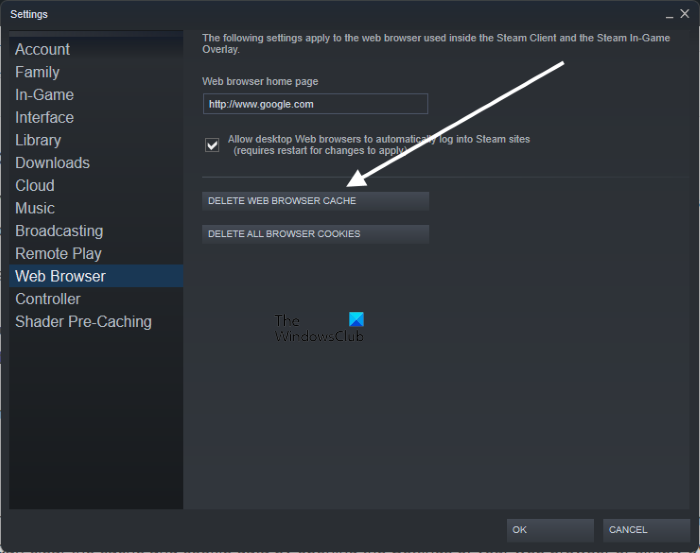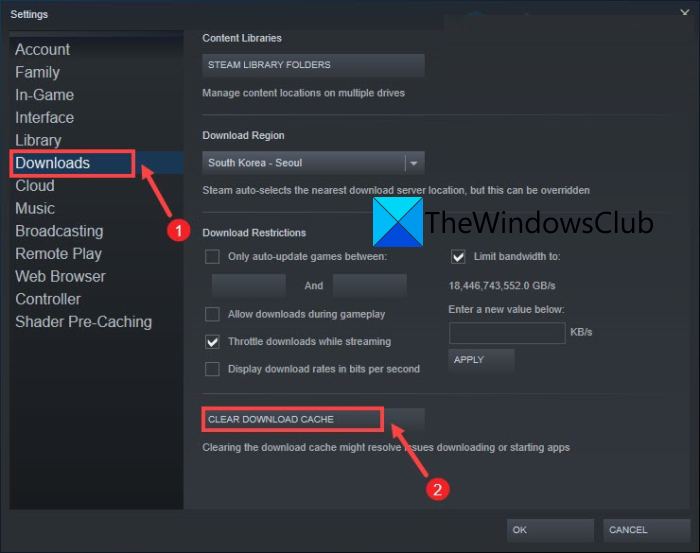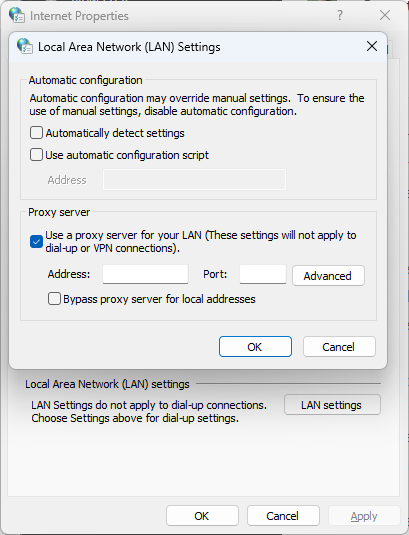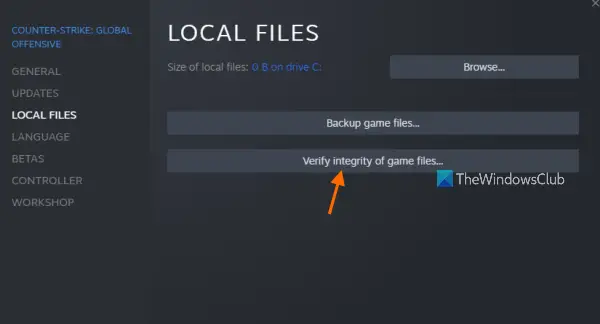Is Steam running slow or lagging on your Windows computer? Steam is a universal game launcher that lets you play tons of free and paid first-person shooter games and other video games on your PC. It is one of the most widely used game launchers, but it also has its share of errors and issues. Some Steam users have reported that the Steam client runs very slowly and becomes laggy on their computers. In this post, we will learn what causes Steam to slow down and how we can fix the issue.

Why is my Steam so slow and laggy?
There can be a number of factors slowing down the performance of Steam on your computer. It could be a generic issue like poor internet connectivity, too many resource-hungry programs running in the background, your power mode, etc. Besides that, bulked up or corrupted web browser cache and cookies or download cache in Steam can slow cause it to slow down or lag.
This issue can also be caused because of infected or corrupted game files of installed games. Another reason for the same can be faulty or out-of-date graphics drivers installed on your system.
Steam running slow or lagging on Windows PC
If the Steam desktop client is running slow or is laggy on your Windows PC, you can use the following methods to resolve the issue:
- Use some generic troubleshooting methods.
- Delete the web browser cache and cookies in Steam.
- Clear the Download cache.
- Clear the Steam cache stored on your computer.
- Modify your proxy settings.
- Verify the integrity of the game files.
- Update the graphics driver to its latest version.
- Repair the Steam app.
- Change Steam’s priority in Task Manager.
1] Use some generic troubleshooting methods
You can start with standard practices to fix the problem of Steam running slow. Try restarting Steam or your computer and see if it helps. Besides that, here are some tricks that you can use:
First of all, you can close unnecessary programs running in the background. If there are too many unwanted applications running on your computer that are eating up your system resources, you will face this issue. So, end all non-essential tasks and then see if there is an improvement in Steam’s performance.
The next thing you can do is uninstall unwanted apps from your computer and free up some space. Also, make sure your internet is stable and working fine.
If you are using a laptop, change the power mode to Best performance. If you have selected a Balanced or Best power efficiency power mode, you won’t be able to achieve the best performance from your apps. Hence, modify your power mode using the below steps:
- First, open Settings using Win+I.
- Next, go to System > Power & battery.
- Now, set the Power mode to Best performance.
In case the above tips don’t work, you can use the below fixes to get rid of the problem.
Read: Fix Steam needs to be online to update error on Windows PC.
2] Delete the web browser cache and cookies in Steam

Certain web browser cache and cookies stored in Steam can reduce the performance of the application. As reported by some affected users, deleting the web browser cache and cookies in Steam has helped them enhance its performance. So, you can also try doing the same and see if the problem is resolved. Here are the steps to do that:
- First, run Steam as an administrator.
- Next, click on the Steam > Settings option and go to the Web Browser tab.
- After that, tap on the Delete Web Browser Cache button and press OK on the next prompt.
- Next, click on the Delete All Browser Cookies button and tap on OK.
- Once done, exit the Settings window and restart Steam to check if the problem is resolved.
See: Fix Steam Missing File Privileges error on Windows PC.
3] Clear the Download cache

In addition to the above solution, you can also try clearing your download cache in the Steam app and check if it helps. Here are the steps to do that:
- First, run the Steam client with admin rights.
- Now, press the Steam > Settings option and navigate to the Downloads tab.
- Next, click on the CLEAR DOWNLOAD CACHE button and then press the OK button on the confirmation prompt.
- After that, close the settings window and reopen Steam.
If the problem persists, use the next fix to resolve the issue.
4] Clear the Steam cache stored on your computer
A corrupted or old cache associated with Steam stored on your computer could be a reason that Steam is lagging. Hence, if the scenario is applicable, you can clear the Steam cache to fix the issue. Here’s how you can do that:
- Firstly, close all tasks related to Steam using Task Manager.
- Now, open File Explorer using Win+E and move to the below address:
C:\Users\<Username>\AppData\Local\Steam
Replace <Username> with your username in the above address.
- Now, press Ctrl+A to select all cache files and click on the Delete option to clear the Steam cache.
- Finally, relaunch Steam and see if there is an improvement in its performance.
Read: Fix Steam Error Codes 53 and 101 on Windows PC.
5] Modify your proxy settings

You can try changing some proxy settings on your computer. It will help in improving connectivity and might resolve the issue of Steam running slow on your computer. You can follow the below steps to do so:
- First, open Windows Search, type Internet Options and then click on Internet Options.
- Inside the Internet Options window, go to the Connections tab and press the LAN settings button.
- After that, tick the Automatically detect settings checkbox and uncheck the Use a proxy server for your LAN option.
- Now, press the OK button to save changes.
You can now check whether Steam is running fine now or not.
6] Verify the integrity of the game files

The corrupted or damaged game files of installed games might be slowing down Steam on your PC. Hence, if the scenario is applicable, verify and repair the game files of all your games. It should help you fix the problem. Here’s how to do that:
- First, open Steam and move to the LIBRARY tab where you can see all your installed and purchased games.
- After that, right-click on a game, and from the context menu, select the Properties option.
- Next, go to the Local Files tab and press the Verify the Integrity of Game Files button. Steam will then verify and repair damaged game files.
- When done, relaunch Steam and see if the problem is gone now.
Read: Validating Steam files is Stuck or Takes forever.
7] Update the graphics driver to its latest version
Well, if you have an outdated or faulty graphics driver, GPU-based apps including Steam won’t perform well. So, update your graphics driver to its latest version and then check if the issue is fixed. To do that, launch Settings using Win+I and go to Windows Update > Advanced options > Optional updates. After that, download and install available driver updates.
Once your graphics driver is updated, restart your PC and launch Steam.
8] Repair the Steam app
A corrupted component of Steam might be causing this problem. Hence, if the scenario applies, repair the Steam client and check if the issue is resolved. You can use Command Prompt or Run command box to do that. Here’s how:
- First, open the Run dialog box using Win+R.
- Now, type the below command in the Open field:
C:\Program Files (x86)\Steam\bin\SteamService.exe /repair
- Next, press the Enter button to repair Steam.
- Once done, restart the Steam app and see if the problem is fixed.
Read: How to make Steam VR Games run better?
9] Change Steam’s priority in Task Manager
If there are multiple applications running on your computer that are consuming system resources, you can try setting a high priority for Steam. It will make Steam run better. Here are the instructions you can follow to do that:
- Firstly, make sure Steam is running on your computer.
- Now, press Ctrl+Shift+Esc to open Task Manager.
- Next, locate the Steam task and right-click on it.
- From the appeared context menu, select the Go to details option.
- After that, right-click on Steam and choose the Set priority > High option.
- Once done, exit the Task Manager window and use Steam to analyze whether it is running better or not.
Does Steam reduce performance?
Steam can reduce or slow down your computer as it requires a fair amount of CPU, GPU, network, and other system resources to run properly. You can check its system requirements and see if your PC fulfills them to avoid performance issues. Also, you can try disabling certain features in Steam like an in-game overlay to avoid reducing your PC’s performance.
Leave a Reply